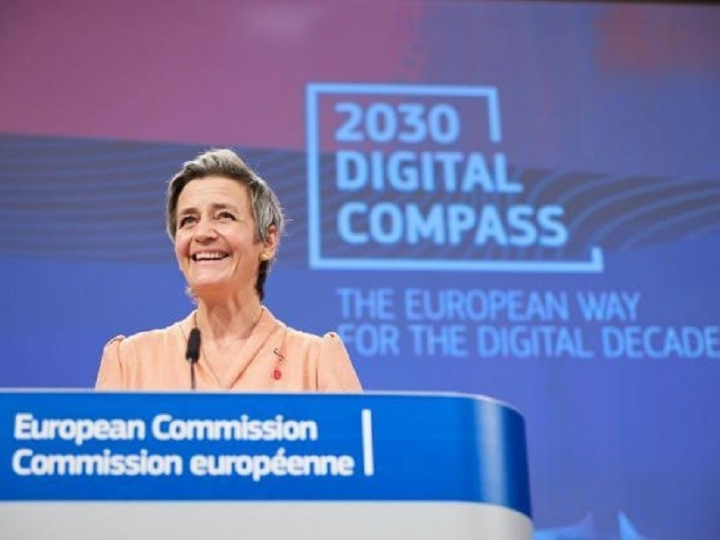by Giles Merritt*
This decade, according to the European Commission, is going to be ‘the digital Twenties’, with the EU recovering ground it has lost both as user and producer of the new technologies that are key to future wealth and prosperity. But how can it be achieved?
Earlier this month the commission presented a “Digital Compass”, setting a course for Europe to escape the high-tech doldrums and instead produce by 2030 a fifth of the world’s semiconductors while also developing its own super-fast quantum computer.
Right now, though, European semiconductor companies account for 4% of capital investment in a sector dominated by American and Asian giants, while the boss of the EU’s largest chipmaker – Infineon – recently expressed grave doubts about the way ahead.
The EU needs a different catch-up strategy
Reinhard Ploss, who heads this semiconductor offshoot of Siemens, told the Financial Times that boosting Europe’s output of smart chips is probably not the right move. “We had a computer industry…it’s gone. We had a consumer electronics industry…it’s gone.” He suggests that until these sectors are rebuilt within Europe it makes little sense to plough huge sums into semiconductors, an area where Infineon is an important niche producer but way out of the Big League.
The investments of the three global giants – Intel in the US, Samsung in South Korea and Taiwan’s TSMC – dwarf those planned in Europe. Infineon’s newest semiconductor ‘foundry’ at Villach in Austria is to cost less than a tenth of TSMC’s huge $20bn plant in southern Taiwan. Europe has evidently missed the microelectronics bus.
The EU needs a different catch-up strategy, and its thinking doesn’t compare well with America’s practical approach to sharpening its competitive edge. In a recent joint article the EU’s commission vice president for digital policy Margrethe Vestager and foreign policy chief Josep Borrell had this to say about the planned ‘digital decade’: “We must ensure that the EU’s vision of digitalisation – based on open societies, the rule of law, and fundamental freedoms – proves its worth.”
Their point was that elsewhere digital technologies can be tools for surveillance and repression. They might have been better advised to contrast the EU approach to America’s rather than to China’s. Ten years ago, the Obama administration initiated a collaborative venture now called Manufacturing USA, and it’s a template European policymakers could copy in a cross-border version.
The commission’s compass needs to be developed into a road map
Its aim is global leadership in advanced manufacturing through large-scale public-private collaboration, and it is beginning to deliver. Almost 2,000 organisations are involved, many of them smaller companies that are far more inventive than big corporations. A mix of federal and private sector funding has helped it create over 500 advanced R&D projects ranging from bio sciences to robotics.
The initiative reflected concerns that America’s innovative edge was being blunted, largely because venture capitalists demand short-term results that more fundamental research can’t yield. Although the US is still technologically well ahead of Europe, it shares the same fear that Asia’s surging technology, backed by breathtaking investment strategies, threatens the previously dominant West with a future of low productivity and declining living standards.
How the EU should respond to these challenges is an all too familiar debate. The Brussels commission is right to draw up a new digital plan, but not to couch it in seemingly unattainable goals. A glance at the diverging projections in the 27 member states makes it plain that 5G connectivity won’t be universal by 2030, that nine-tenths of all small businesses won’t attain ‘digital intensity’ and that today’s EU shortfall of almost a million digital specialists is unlikely to be transformed into a 20m-strong ICT workforce.
The commission’s compass needs to be developed into a road map. The underlying problems in Europe are cultural; slow take-up of computerisation in the 1990s, inadequate education and training and governments’ failure to introduce tax incentives that stimulate digital transformation. These are the areas long overdue for an EU-wide plan.
*Founder, "Friends of Europe"
**first published in: www.friendsofeurope.org




 By: N. Peter Kramer
By: N. Peter Kramer
